#tetrahydrocannabinol and cannabidiol
Explore tagged Tumblr posts
Text
Unlocking the Potential of CBD Oil: A Natural Remedy for Wellness
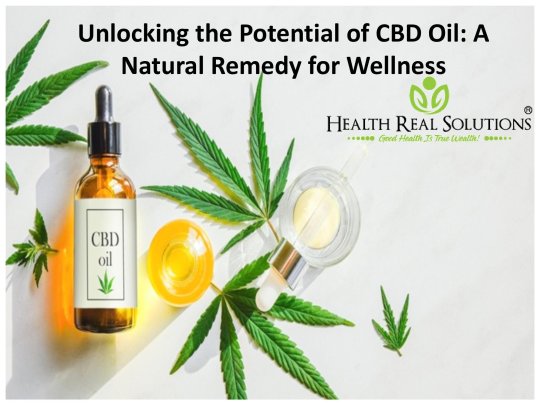
In recent years, CBD oil has gained significant attention for its potential health benefits, leading many to explore this natural remedy as a way to enhance their overall wellness. CBD, short for cannabidiol, is one of the many compounds found in the cannabis plant. Unlike its counterpart, THC (tetrahydrocannabinol), CBD is non-psychoactive, meaning it doesn't produce the "high" associated with marijuana. This quality has made CBD oil a promising option for those seeking relief from various ailments without the side effects typically associated with traditional medications.
CBD oil is commonly derived from industrial hemp, a cannabis variety containing minimal THC levels. Its popularity can be attributed to its potential to alleviate a range of symptoms, such as chronic pain, anxiety, depression, and even epilepsy. Research and anecdotal evidence suggest that CBD interacts with the body's endocannabinoid system, which plays a crucial role in regulating various bodily functions, including pain perception, mood, and immune response.
Furthermore, CBD oil is available in various forms, including tinctures, capsules, topicals, and edibles, allowing users to choose the most suitable method for their specific needs. It is essential to consult with a healthcare professional before incorporating CBD oil into your wellness routine, especially if you have underlying medical conditions or are taking other medications.
While the potential benefits of CBD oil are promising, it's important to remember that the industry is still evolving, and research is ongoing. As more studies are conducted, our understanding of CBD's full range of applications will likely expand. For those looking for a natural alternative to traditional treatments, CBD oil may hold the key to unlocking a healthier, more balanced life.
#CBD oil has gained significant attention for its potential health benefits#leading many to explore this natural remedy as a way to enhance their overall wellness. CBD#short for cannabidiol#is one of the many compounds found in the cannabis plant. Unlike its counterpart#THC (tetrahydrocannabinol)#CBD is non-psychoactive#meaning it doesn't produce the “high” associated with marijuana. This quality has made CBD oil a promising option for those seeking relief#CBD oil is commonly derived from industrial hemp#a cannabis variety containing minimal THC levels. Its popularity can be attributed to its potential to alleviate a range of symptoms#such as chronic pain#anxiety#depression#and even epilepsy. Research and anecdotal evidence suggest that CBD interacts with the body's endocannabinoid system#which plays a crucial role in regulating various bodily functions#including pain perception#mood#and immune response.#Furthermore#CBD oil is available in various forms#including tinctures#capsules#topicals#and edibles#allowing users to choose the most suitable method for their specific needs. It is essential to consult with a healthcare professional befor#especially if you have underlying medical conditions or are taking other medications.#While the potential benefits of CBD oil are promising#it's important to remember that the industry is still evolving#and research is ongoing. As more studies are conducted#our understanding of CBD's full range of applications will likely expand. For those looking for a natural alternative to traditional treatm#In recent years
0 notes
Text
Cannabidiol: A Comprehensive Guide to Its Uses and Benefits
Cannabidiol, or CBD, is a natural compound found in cannabis plants that has gained significant popularity for its potential therapeutic benefits. It is non-psychoactive, meaning it doesn't cause a "high" like THC, another compound found in cannabis. CBD is believed to interact with the body's endocannabinoid system, which plays a role in regulating various functions like pain, mood, and immune response. As a result, CBD is commonly used for managing pain, anxiety, and inflammation. It comes in various forms, such as oils, capsules, and topical creams, and is widely researched for its potential in treating a range of health conditions.
#cannabidiol#cannabidiol near me#cannabidiol oil for dogs#cannabidiol drinks#cannabidiol full spectrum#cannabidiol effect#cannabidiol tetrahydrocannabinol#cannabidiol oil for anxiety#cannabidiol isolate#tetrahydrocannabinol y cannabidiol#cannabidiol water#is cannabidiol addictive#cannabidiol oil for cats#cannabidiol stocks#cannabidiol books#cannabidiol gummy bears#cannabidiol for arthritis#hemp vs cannabidiol#cannabidiol from hemp#cannabidiol vs hemp oil#is cannabidiol legal#cannabidiol oil for pets#cannabidiol for weight loss#tetrahydrocannabinol and cannabidiol#cannabidiol que es#cannabidiol for pain relief#cannabidiol tinnitus#is cannabidiol weed#cannabidiol patches#cannabidiol for back pain
0 notes
Text
Scientists have discovered cannabidiol, a compound in cannabis known as CBD, in a common Brazilian plant, opening potential new avenues to produce the increasingly popular substance. The team found CBD in the fruits and flowers of a plant known as Trema micrantha blume, a shrub which grows across much of the South American country and is often considered a weed, molecular biologist Rodrigo Moura Neto of the Federal University of Rio de Janeiro told AFP in June 2023. CBD, increasingly used by some to treat conditions including epilepsy, chronic pain and anxiety, is one of the main active compounds in cannabis, along with tetrahydrocannabinol, or THC – the substance that makes users feel high. The compound's effectiveness as a medical treatment is still under research.
Continue Reading.
#Science#Plants#Health#Biology#Molecular Biology#Cannabis#CBD#Cannabidoil#Trema Micrantha Blume#Brazil
275 notes
·
View notes
Text
Cannabis: A Multifaceted Plant for a Multitude of Uses
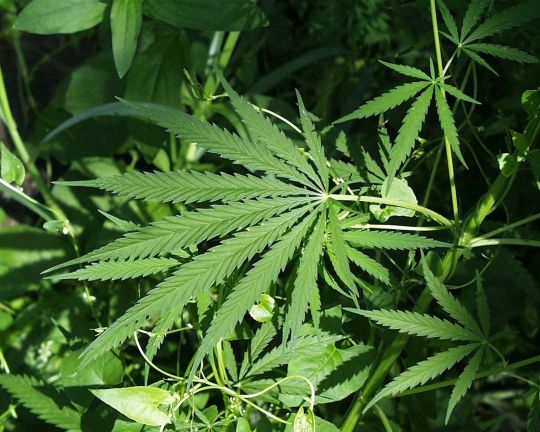
Introduction
Cannabis, a plant that has been a part of human history for thousands of years, is experiencing a resurgence in popularity as its myriad of uses become increasingly recognised. From its strong fibres used in textiles and paper to its nutritional and medicinal properties, cannabis has proven itself to be a truly multipurpose plant. This article will delve into the various aspects of this versatile plant and explore how it has been utilised throughout history and across cultures.
The History of Hemp: A Material with Unmatched Strength
One of the most well-known uses of cannabis is in the production of hemp, a material derived from the plant's strong fibres. These fibres have been used for millennia to create durable cloth, rope, and paper. The Vikings, known for their seafaring prowess, utilised hemp to construct sails for their ships, enabling them to voyage from Scandinavia to Nova Scotia. In the United States, Betsy Ross sewed the first flag from hempen cloth, and the Declaration of Independence was written on hemp paper. Even the now obsolete German currency, Deutsche Mark, were once printed on hemp paper.
The use of hemp extended beyond these applications, as seen in the Netherlands, where windmills were built specifically to crush hemp stalks. This demonstrates the importance of hemp in various industries and highlights the plant's incredible versatility.
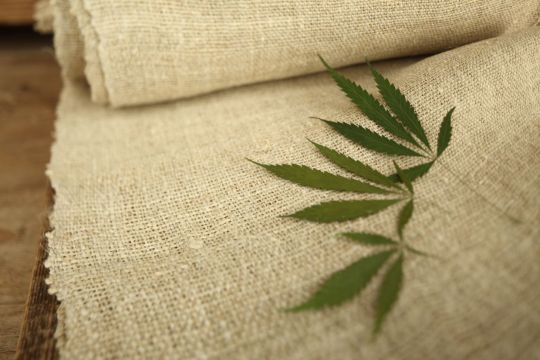
Cannabis as a Nutritional Powerhouse
While the strength of its fibres may have initially attracted humans to the cannabis plant, its potential as a food source likely played a significant role in its widespread cultivation. Cannabis seeds, or hempseeds, are packed with essential nutrients such as polyunsaturated fats, essential fatty acids, and proteins. These qualities qualify hempseed as a functional food, meaning it provides health benefits beyond basic nutrition.
For over three thousand years, Asian cultures have utilised hempseed as both a food and a medicine. Despite the prohibition of cannabis products in the United States, hempseed has been allowed for use in food over the last two decades. This highlights the recognition of its nutritional value and potential health benefits.

Cannabis Resin: A Source of Medicinal and Psychoactive Compounds
The resin produced by the cannabis plant is another aspect that has garnered significant attention due to its medicinal and psychoactive properties. The compounds found in cannabis resin, such as THC (tetrahydrocannabinol) and CBD (cannabidiol), have been the focus of breeding efforts to increase their production. These efforts have led to the development of various cannabis drug chemotypes around the world, with some cultivars producing only THC, others producing both THC and CBD, and a few expressing propyl THCV (tetrahydrocannabivarin) and/or CBDV (cannabidivarin).
The medicinal uses of cannabis resin have been widely researched, with evidence suggesting its effectiveness in treating conditions such as chronic pain, epilepsy, multiple sclerosis, and more. The psychoactive effects of THC have also led to the recreational use of cannabis, which has sparked debates surrounding its legalisation and regulation.
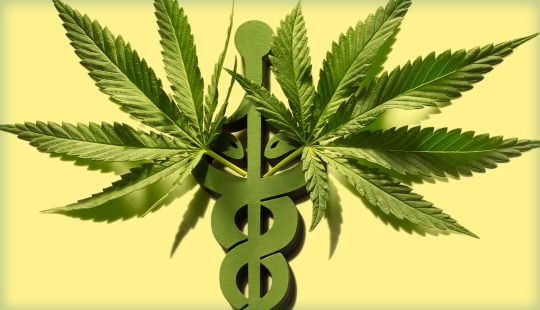
Environmental Benefits of Cannabis Cultivation
In addition to its myriad uses, cannabis cultivation offers several environmental benefits. Hemp plants are known to absorb large amounts of carbon dioxide, making them an effective tool in combating climate change. Furthermore, hemp requires fewer pesticides and herbicides than many other crops, reducing the environmental impact of agriculture.
Cannabis can also be used as a source of biofuel, offering a renewable and eco-friendly alternative to fossil fuels. Additionally, the fast growth rate and low water requirements of hemp make it a sustainable crop, capable of providing resources without causing significant strain on natural resources.
Conclusion
Cannabis is a truly remarkable plant, with applications ranging from textiles and paper to nutrition and medicine. As society continues to recognise its numerous benefits, it is likely that the cultivation and use of cannabis will only continue to grow. By embracing this versatile plant, we can harness its potential to improve our health, industries, and environment for generations to come.
#cannabis#cannabismedicine#cannabishistory#medical cannabis#cbd#feelgreatagain#cbdoil#budandtender#health#endocannabinoidsystem
101 notes
·
View notes
Text
What gives the cannabis sativa plant it’s pain-relieving properties?
Most people will tell you it’s cannabidiol (CBD) and/or tetrahydrocannabinol (THC), the two most well-known chemical compounds found in cannabis.
But researchers at University of Arizona Health Sciences say terpenes -- aromatic compounds that give cannabis its distinctive “skunky” smell – have analgesic effects as well. In fact, in a new study published in the journal PAIN, they report that cannabis terpenes are just as effective as morphine in reducing neuropathic pain in laboratory animals.
“A question that we’ve been very interested in is could terpenes be used to manage chronic pain?” lead researcher John Streicher, PhD, a Pharmacology Professor at UA’s College of Medicine in Tucson, said in a press release. “What we found is that terpenes are really good at relieving a specific type of chronic pain with side effects that are low and manageable.”
Terpenes are found in all plants and are the main component of essential oils. Terpenes give lavender, sage and eucalyptus oils their distinctive smells, which are used to promote relaxation or even reduce pain and inflammation. In nature, terpenes help plants attract pollinators such as bees or to protect themselves from predators. (Read more at link)
Doesn’t surprise me at all. Sometimes pot is pain relieving, and sometimes it just makes it easier to watch tv in pain. I’m really fond of Wedding Cake for pain relief.
26 notes
·
View notes
Text
Scientists Find Cannabis Compound Inside Totally Different Plant in Brazil

Scientists have discovered cannabidiol, a compound in cannabis known as CBD, in a common Brazilian plant, opening potential new avenues to produce the increasingly popular substance.
The team found CBD in the fruits and flowers of a plant known as Trema micrantha blume, a shrub which grows across much of the South American country and is often considered a weed, molecular biologist Rodrigo Moura Neto of the Federal University of Rio de Janeiro told AFP in June.
CBD, increasingly used by some to treat conditions including epilepsy, chronic pain and anxiety, is one of the main active compounds in cannabis, along with tetrahydrocannabinol, or THC – the substance that makes users feel high.
The compound's effectiveness as a medical treatment is still under research.
Neto said chemical analysis had found "Trema" contains CBD but not THC, raising the possibility of an abundant new source of the former – one that would not face the legal and regulatory hurdles of cannabis, which continues to be outlawed in many places, including Brazil.
Continue reading.
#brazil#brazilian politics#politics#science#biology#medicine#mod nise da silveira#image description in alt
23 notes
·
View notes
Note
Hi, I'm considering taking CBD for sensory processing issues, I'm wondering if you have any personal experience with that or maybe your followers do?
Hi there,
Everyone will have a different experience, however it has shown to help with negative effects. According to a study from National Library of Medicine:
This case study aims to demonstrate the use of cannabidiol (CBD) with low-dose tetrahydrocannabinol (THC) in managing symptoms associated with autism spectrum disorder (ASD) to increase the overall quality of life for these individuals and their families. ASD is a neurodevelopmental disorder affecting cognitive development, behavior, social communication, and motor skills. Despite the increasing awareness of ASD, there is still a lack of safe and effective treatment options. The study includes a nine-year-old male patient who was diagnosed with nonverbal ASD. He exhibited emotional outbursts, inappropriate behaviors, and social deficits including challenges in communicating his needs with others. Since the patient was unable to attain independence at school and at home, his condition was a significant burden to his caregivers. The patient was treated with full-spectrum high CBD and low THC oil formulation, with each milliliter containing 20 mg of CBD and <1 mg of THC. CBD oil starting dose was 0.1ml twice daily, increased every three to four days to 0.5ml twice daily. Overall, the patient experienced a reduction in negative behaviors, including violent outbursts, self-injurious behaviors, and sleep disruptions. There was an improvement in social interactions, concentration, and emotional stability. A combination of high CBD and low-dose THC oil was demonstrated to be an effective treatment option for managing symptoms associated with autism, leading to a better quality of life for both the patient and the caregivers.
The full study will be below in case you want to read more:
I hope this helps. Thank you for the inbox. I hope you have a wonderful day/night. ♥️
21 notes
·
View notes
Text
High on Health: The Medical Benefits of Cannabis and CBD
In recent years, cannabis and its derivatives have been at the forefront of medical discussions, captivating researchers, patients, and enthusiasts alike. While often associated with recreational use, cannabis harbors a treasure trove of therapeutic properties, with CBD (cannabidiol) emerging as a promising component for medicinal purposes. Let's delve into the myriad ways in which cannabis, weed, ganja, joints, hash, and more are revolutionizing the landscape of modern medicine.
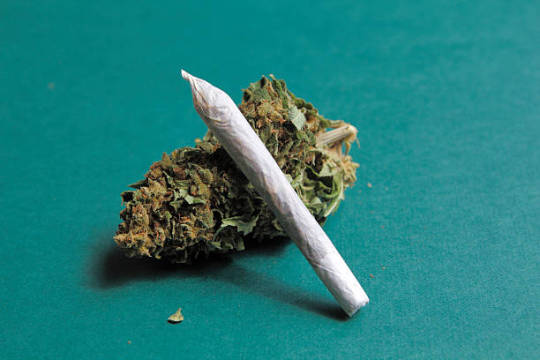
Exploring the Cannabis Spectrum:
Cannabis is a complex plant comprising hundreds of chemical compounds, known as cannabinoids, each with its unique effects on the body. Among these, THC (tetrahydrocannabinol) and CBD are the most studied and well-known. THC is responsible for the psychoactive effects associated with marijuana, while CBD offers therapeutic benefits without inducing a high.
Cannabis and Pain Relief:
One of the most renowned medicinal properties of cannabis is its ability to alleviate pain. Whether it's chronic pain, neuropathic discomfort, or pain associated with conditions like arthritis or multiple sclerosis, cannabis has shown remarkable efficacy in providing relief. From smoking weed to consuming CBD-infused products, patients have found various methods to manage their pain symptoms effectively.
Ganja: A Gateway to Anxiety Relief:
Anxiety disorders affect millions worldwide, leading to debilitating symptoms that disrupt daily life. Fortunately, cannabis, particularly strains with high CBD content, has demonstrated anxiolytic properties, offering a natural remedy for those struggling with anxiety. Whether it's through vaping ganja or incorporating CBD oils into their wellness routine, individuals are finding solace in the calming embrace of cannabis.
Joint Support: Cannabis for Arthritis Management:
Arthritis, characterized by inflammation of the joints, can cause immense pain and stiffness, severely impacting mobility and quality of life. Enter cannabis, with its anti-inflammatory properties that hold promise in alleviating arthritis symptoms. Whether applied topically as a hash-infused balm or consumed orally, cannabis and CBD offer a holistic approach to managing arthritis discomfort, providing patients with newfound freedom of movement.
Hash: A Healing Balm for Epilepsy:
For individuals living with epilepsy, Hash treatments may offer limited relief and come with a host of side effects. However, emerging research suggests that cannabis-derived compounds, particularly CBD, could offer a beacon of hope. Studies have shown that CBD can reduce the frequency and severity of seizures in epilepsy patients, paving the way for a more natural and well-tolerated treatment option.
In Conclusion:
From weed and ganja to joints and hash, the realm of cannabis offers a diverse array of therapeutic possibilities, transforming the landscape of modern medicine. Whether it's pain relief, anxiety management, or epilepsy treatment, cannabis and CBD continue to break barriers and challenge stigmas, ushering in a new era of holistic healthcare. As research advances and societal perceptions evolve, the medicinal marvels of cannabis are poised to shine brighter than ever, offering healing and hope to countless individuals worldwide.
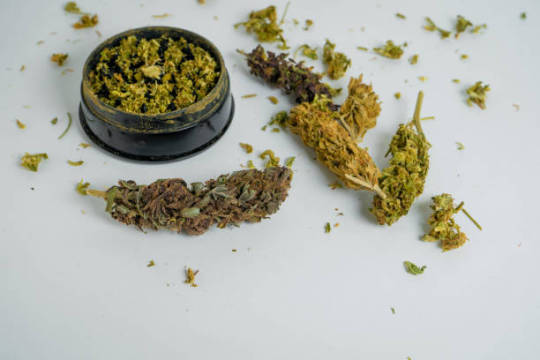
3 notes
·
View notes
Text
Cannabis Beverages: A better way?
Cannabis beverages are rapidly gaining popularity in the cannabis industry, offering a novel and discrete way to consume cannabis. These drinks come in various forms, including teas, sodas, and even cocktails, infused with cannabinoids such as THC (tetrahydrocannabinol) and CBD (cannabidiol). This post explores how cannabis beverages are made, their advantages over other consumption methods, and tips for safe and responsible use.
How Cannabis Beverages Are Made
Decarboxylation: The first step in making cannabis beverages is decarboxylation. This process involves heating cannabis to activate its psychoactive properties. Raw cannabis contains THCA (tetrahydrocannabinolic acid) and CBDA (cannabidiolic acid), which must be converted into THC and CBD, respectively, through heating.
Extraction: After decarboxylation, cannabinoids are extracted from the cannabis plant. This can be done using various methods, including CO2 extraction, ethanol extraction, or oil infusion. CO2 extraction is often preferred for its efficiency and ability to produce a pure, high-quality product.
Emulsification: Cannabinoids are hydrophobic, meaning they do not mix well with water. To create a stable beverage, emulsification is necessary. This involves breaking down the cannabinoids into tiny particles and suspending them in the liquid using an emulsifier. Nanoemulsion technology is commonly used, which reduces the cannabinoid particles to nano-sized droplets, enhancing their absorption and effectiveness.
Infusion: The emulsified cannabinoids are then infused into the beverage base. This base can be anything from water, tea, soda, or even alcoholic beverages. The infusion process ensures that the cannabinoids are evenly distributed throughout the liquid.
Flavoring and Packaging: The final step involves adding flavors to enhance the taste of the beverage and packaging it in a way that maintains its freshness and potency. This may include adding natural fruit flavors, sweeteners, or other ingredients to create a palatable and enjoyable drink.
Advantages of Cannabis Beverages
Discretion and Convenience: Cannabis beverages are highly discreet and convenient. Unlike smoking or vaping, which can be conspicuous and produce a strong odor, cannabis beverages look and feel like any other drink. This makes them ideal for social settings or for individuals who prefer a more private way to consume cannabis.
Precise Dosage: One of the significant benefits of cannabis beverages is the ability to control dosage accurately. Each beverage typically indicates the amount of THC or CBD it contains, allowing users to consume a specific amount. This is particularly beneficial for medicinal users who require precise dosages to manage their symptoms.
Faster Onset and Duration: Compared to edibles, which can take up to two hours to take effect, cannabis beverages generally have a faster onset time. The nanoemulsion technology used in many cannabis drinks allows for quicker absorption into the bloodstream, leading to effects that can be felt within 15 to 45 minutes. Additionally, the effects of cannabis beverages can last longer than smoking or vaping, providing extended relief.
Healthier Alternative: For health-conscious consumers, cannabis beverages offer a smoke-free alternative to enjoy the benefits of cannabis. Smoking cannabis can have adverse effects on the lungs, while beverages eliminate this risk entirely. Additionally, many cannabis beverages are formulated with low-calorie or health-oriented ingredients, appealing to those who prioritize their overall well-being.
Safe and Responsible Use of Cannabis Beverages
Start Low and Go Slow: If you are new to cannabis beverages, start with a low dose and give it time to take effect before consuming more. The potency of cannabis beverages can vary, and individual tolerance levels differ. Beginning with a small amount helps to avoid overconsumption and any unwanted side effects.
Understand the Dosage: Pay close attention to the dosage information on the label of the cannabis beverage. Most products will specify the amount of THC and CBD per serving. Understanding the dosage helps you manage your intake and achieve the desired effects without exceeding your tolerance.
Be Mindful of Timing: The onset time for cannabis beverages can be shorter than edibles but still requires some patience. Avoid consuming additional doses too quickly. Wait at least 30 to 45 minutes to assess the effects before considering more.
Stay Hydrated: Like any beverage, it is essential to stay hydrated when consuming cannabis drinks. Drinking water alongside your cannabis beverage can help mitigate any potential dehydration and maintain overall well-being.
Avoid Mixing with Alcohol: Combining cannabis beverages with alcohol can intensify the effects of both substances and may lead to uncomfortable or adverse reactions. It is best to avoid mixing the two, especially if you are unfamiliar with how your body responds to cannabis.
Store Safely: Keep cannabis beverages out of reach of children and pets. Store them in a cool, dark place to preserve their potency and prevent accidental consumption.
Know the Laws: Be aware of the legal status of cannabis beverages in your area. Regulations regarding the purchase, possession, and consumption of cannabis products vary by region. Ensure you are compliant with local laws to avoid any legal issues.
2 notes
·
View notes
Text

Cannabis, also known as marijuana, is a genus of flowering plants in the Cannabaceae family. It is indigenous to Central Asia and the Indian subcontinent, but it is now cultivated and grown in various parts of the world. Cannabis plants have been used for thousands of years for different purposes, including medicinal, spiritual, industrial, and recreational uses.
The two main species of cannabis are Cannabis sativa and Cannabis indica, with hybrids also commonly found. These plants have distinct characteristics and can exhibit different growth patterns, appearances, and chemical compositions.
Cannabis contains a range of chemical compounds known as cannabinoids, the most well-known being delta-9-tetrahydrocannabinol (THC) and cannabidiol (CBD). THC is responsible for the psychoactive effects of cannabis, while CBD does not produce psychoactive effects but may have potential therapeutic benefits.
Cannabis can be consumed in various forms, including dried flowers (commonly known as buds), hashish (concentrated resin), and cannabis oil. It can be smoked, vaporized, or ingested orally in the form of edibles, tinctures, or capsules. The method of consumption determines how the cannabinoids are absorbed into the body and how quickly the effects are felt.
The effects of cannabis can vary depending on factors such as the strain, THC and CBD content, dosage, method of consumption, and individual differences. Common effects include relaxation, euphoria, altered perception of time and space, increased sociability, and potential cognitive and sensory alterations. However, it's important to note that cannabis affects individuals differently, and some people may experience negative effects such as anxiety, paranoia, or impaired coordination.
In recent years, there has been growing interest in the potential medicinal uses of cannabis. Some studies suggest that cannabinoids, particularly CBD, may have therapeutic benefits for conditions such as chronic pain, epilepsy, multiple sclerosis, anxiety, and nausea associated with chemotherapy. However, further research is needed to fully understand the potential benefits and risks of cannabis for medical purposes.
It's important to consider the legal status of cannabis in your jurisdiction, as laws and regulations vary widely around the world. While some countries and states have legalized cannabis for medical and/or recreational use, others still classify it as an illegal substance. It's crucial to be aware of and comply with the laws in your specific area.
As with any substance, responsible use, moderation, and informed decision-making are important. If you have questions or concerns about cannabis use, it's recommended to seek advice from healthcare professionals or organizations specializing in substance use and mental health.
6 notes
·
View notes
Text
Every Thing You Need To Know About Weed Edibles | Cavi Land

In recent years, the cannabis industry has witnessed a surge in popularity, with weed edibles emerging as a favored choice among consumers seeking an alternative to traditional smoking methods. From delectable chocolates to tantalizing gummies, weed edibles offer a discreet and convenient way to enjoy the benefits of cannabis. Here's a comprehensive guide to help you navigate the world of weed edibles.
What Are Weed Edibles? Weed edibles are food and beverage products infused with cannabis extracts, typically cannabinoids such as THC (tetrahydrocannabinol) or CBD (cannabidiol). These products come in various forms, including chocolates, gummies, baked goods, beverages, and more.
How Do They Work? When consumed, weed edibles undergo digestion in the gastrointestinal tract, where cannabinoids are absorbed into the bloodstream. Unlike smoking, which delivers cannabinoids to the bloodstream rapidly through the lungs, edibles take longer to take effect but offer a more prolonged and potent experience.
Dosage and Effects It's crucial to start with a low dosage when trying weed edibles, as their effects can be more intense and long-lasting compared to smoking. The onset of effects typically occurs within 30 minutes to 2 hours after consumption, with peak effects felt within 2-4 hours. Factors such as metabolism, tolerance, and the potency of the product can influence the experience.
Health Benefits
...Read More
2 notes
·
View notes
Text
Mindert CBD die Schäden von Cannabis? Cannabis ist eine psychedelische Droge, die in der westlichen Welt zunehmend für medizinische und Freizeitzwecke legalisiert wird. Gleichzeitig werden hinsichtlich ihrer ∆9-Tetrahydrocannabinol (THC)-Konzentration potentere Arzneimittelzubereitungen verwendet. Es ist bekannt, dass THC akute Nebenwirkungen verursacht und zu langfristigen Beeinträchtigungen führen kann, wenn es dauerhaft in hohen Dosen verwendet wird. Ein kürzlich Neuropsychopharmakologie Studie untersucht, ob ... #BLUT #Blutdruck #Cannabidiol #Cannabis #Frequenz #Herz #Husten #Krankenhaus #Metabolit #Neuropsychopharmakologie #Psychose #Pulsschlag #Schokolade #Substanzgebrauchsstörung #Syndrom #Tetrahydrocannabinol #Verbindung
#Medical_Research_News#Medical_Science_News#News#BLUT#Blutdruck#Cannabidiol#Cannabis#Frequenz#Herz#Husten#Krankenhaus#Metabolit#Neuropsychopharmakologie#Psychose#Pulsschlag#Schokolade#Substanzgebrauchsstörung#Syndrom#Tetrahydrocannabinol#Verbindung
0 notes
Text
Marijuana for Mental Health Treatment: Unveiling the Scientific Insights
Marijuana, also known as cannabis, has long been associated with recreational use. However, recent scientific research has shed light on its potential therapeutic benefits, particularly in the realm of mental health treatment. In this article, we will delve into the scientific evidence surrounding marijuana's effects on mental health and explore three compelling facts that highlight its potential as a treatment option. Discover the intriguing possibilities that may pave the way for a new approach to mental health care.
Facts and Evidence:
Anxiety and Stress Reduction:
Studies suggest that certain components of marijuana, such as cannabidiol (CBD), may help alleviate symptoms of anxiety disorders.
CBD has shown promise in reducing anxiety levels and improving overall well-being, making it a potential alternative or adjunct to traditional anxiety medications.
Pain Management and Mood Enhancement:
Marijuana's active compounds, particularly tetrahydrocannabinol (THC), have been found to have analgesic properties, providing relief for chronic pain conditions.
Additionally, THC has shown mood-enhancing effects, potentially aiding individuals with mood disorders such as depression or bipolar disorder.
PTSD Symptom Relief:
Research suggests that marijuana may be beneficial for individuals with post-traumatic stress disorder (PTSD).
The cannabinoids in marijuana interact with the endocannabinoid system, which plays a role in regulating fear, anxiety, and memory, potentially reducing PTSD symptoms.
To delve deeper into the scientific evidence supporting the use of marijuana for mental health treatment, and to gain a comprehensive understanding of its potential benefits and considerations, click the link below.
#Marijuana#MentalHealth#TherapeuticBenefits#CannabisResearch#AnxietyTreatment#StressReduction#PainManagement#MoodEnhancement#DepressionRelief#PTSDTreatment#AlternativeMedicine#Neuroscience#Cannabinoids#EndocannabinoidSystem#ScienceBehindMarijuana
7 notes
·
View notes
Text
People who are pregnant or breastfeeding should be warned that using cannabis in any way, shape, or form has the potential to negatively impact their developing child. A new, preclinical study on rats spotlights the possible dangers of managing morning sickness or other symptoms of pregnancy with products containing either THC (Δ9-tetrahydrocannabinol) or CBD (cannabidiol).
Continue Reading.
57 notes
·
View notes
Text
How Much Does Cannabis Oil Cost?

Whether you’re a new or experienced cannabis consumer, you’ve likely wondered, “how much does cannabis oil cost?” This new therapeutic product has earned high praise from medical and recreational users. Each bottle of cannabis oil, also known as a tincture, comes with varying ratios of cannabinoids at relatively steep prices compared to other health- and wellness-related products. Despite the high markup for cannabis oil, many consumers regularly use this delivery method to reap all of the mental and physical benefits of two major cannabinoids: cannabidiol (CBD) and delta-9-tetrahydrocannabinol (THC). A number of factors affect the price of the oil. You can expect to pay anywhere from $30 to up to $200 for a single bottle. Here’s what you need to know about shopping smart for cannabis oil.
How Much Does CBD Oil Cost?
CBD oil has become widely accessible to the entire nation. It’s revered for its non-psychoactive and therapeutic effects on pain, anxiety, inflammation, seizures, and other debilitating symptoms. The health and wellness aspect of CBD oil commands a premium price for its symptomatic relief. Apart from its medical applications, there are plenty of other factors that determine how much consumers pay for cannabis oil in general. Katie Stem of Peak Extracts told Weedmaps, “When examining a cost analysis from a production perspective, you look at labor, materials, packaging, labels, potency/purity testing, marketing, and shipping distribution.” For manufacturers, bulk CBD can range from $3 to $15 per gram, which works out to be less than one cent to 1.5 cents per milligram. Consumers end up paying about $50 to $60 per 1,000 mg bottle, or about 5 to 20 cents per milligram.
Why Are People Paying Premium Prices for CBD Oil?
CBD oil products, in particular, offer many potential health benefits for medical and recreational consumers. People generally buy CBD oil to help them with inflammation, pain, anxiety, stress, depression, muscle spasms, fatigue, sleep disorders, and plenty of other symptoms. Furthermore, CBD doesn’t produce the negative side effects, especially if you take the appropriate dosage. Despite the popularity of CBD oil products, their efficacy has not been approved by the Food and Drug Administration. Only the CBD-based drug, Epidiolex, has been approved for medical use. In fact, many hemp companies have received warning letters from the FDA for claiming unproven health benefits on its packaging and advertising. While CBD oil can help supplement a conventional treatment plan, it’s important to consult with your physician before starting a cannabis oil regimen.
How Much Does Cannabis Oil Cost?
Cannabis oil varies in price based on cannabinoid content, as well as the region where it’s sold. Seattle-based Headset published a report detailing pricing data for a variety of marijuana products in Washington State, California, Nevada, and Colorado. The price of THC oil varied by state. For example, Colorado had the highest price at 41 cents per milligram, which was 64 percent higher than Nevada’s 25 cents per milligram. California and Washington both had a 30 cent per milligram average price for THC oil. Here are just a few examples of THC oil prices in the Southern California market: - Mary’s Medicinals The Remedy THC has 1,000 mg of THC priced at $56, about 6 cents per milligram. - Raw 1:20 THC:CBD Focus tincture has 1,000 mg priced at $87, about 9 cents per milligram. - Select 1:1 Peppermint oil has 1,000 mg priced at $68, about 7 cents per milligram. - Care by Design 8:1 CBD-rich sublingual drops has about 240 mg priced at $40, about 16 cents per milligram. - Humboldt Apothecary Relax CBD 3:1 tincture has 250 mg priced at $65, about 26 cents per milligram. - Releaf 1:1 CBD:THCa tincture has 900 mg priced at $99.62, about 11 cents per milligram.
Marijuana vs. Hemp-Derived Cannabis Oil
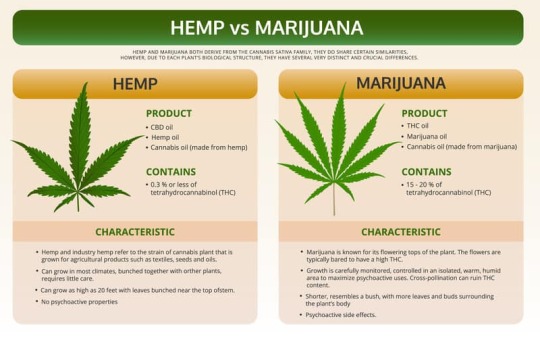
Cannabis oil products can be derived from either marijuana or hemp plants. Both belong to the same Cannabis sativaplant species. Marijuana plants are primarily bred for a THC-rich resin, while hemp plants produce high-CBD resin with only trace amounts of THC. Hemp-derived oil tends to be more affordable than marijuana-derived oil. When shopping for cannabis oil, consumers may run across terms such as full-spectrum, broad-spectrum, or distillate. Each comes with varying price points depending on many factors, including its source. Full-spectrum products contain the original chemical profile of a strain, including THC, CBD, and terpenes. Broad-spectrum contains everything in the plant but the THC, for a non-intoxicating experience. Distillates only contain one cannabinoid, either CBDA or THCA. The compounds in full-spectrum and broad-spectrum cannabis oil not only add to the aroma, but also the effects and the price. Research into cannabinoids indicate that the interaction between different cannabinoids and terpenes produces an “entourage effect.” This synergistic effect of the plant’s compounds is thought to enhance the therapeutic benefits of a cannabis product. For this reason, many medical consumers look for full- or broad-spectrum cannabis oil. However, someone who doesn’t want the aroma of intoxication of cannabis, may stick with a CBD isolate. Hemp-derived CBD oil is more widely available than cannabis-derived tinctures. Ever since the 2018 Farm Bill passed, hemp-derived CBD is legal all over the country. If you’re hoping to buy cannabis-derived tinctures, you must live in a state that allows medical cannabis (at the very least). In these states, cannabis-derived tinctures tend to be pricier because hemp isn’t as expensive to produce.
Factors Affecting Cannabis Oil Costs
A bottle of cannabis oil can vary in price based on an assortment of factors from production to marketing costs. For example, cannabis oil made from organically grown hemp from Colorado will have a higher price than oil made from a plant grown in a state with a newer market. Besides quality, potency also affects the price of a product. Cannabis oil with 1,000 mg of cannabinoids will be more expensive than oil with fewer cannabinoids per milliliter. The cannabis industry has unique costs and challenges that can drive up the price of cannabis oil. For example, lab testing requirements can force companies to spend hundreds of thousands of dollars testing their oil for contaminants. Lab testing can range from $100 to $400 per sample tested. In many cases, cannabis must be tested various times throughout the supply-chain process. Furthermore, the cannabis industry can’t write off business expenses because according to the US federal government, the marijuana plant is a Schedule I drug with no medicinal value. Dispensaries and producers may hike up their prices to offset some of these overhead costs. Industry experts believe that full legalization will help build a stronger regulatory framework for the industry to benefit both companies and consumers.
Is Cannabis Oil Lab Tested?
Certified laboratories can provide a complete analysis of licensed cannabis product samples. Third-party labs can test for potency including its cannabinoid and terpene profile. Labs also test for pesticides, microbial contamination, residual solvents, and other harmful chemicals that can remain after the extraction process. Essentially, lab testing ensures the product you are buying has the potency listed on the label. More importantly, lab testing ensures the product you are consuming has no harmful contaminants that can offset its therapeutic effects. Lab testing can significantly increase the price of cannabis oil products. However, it’s up to you to make sure your product is actually lab tested. Most companies who lab test provide a certificate of analysis (COA) on its website. Simply type in the batch number found on the packaging into their lab results page. Buying from a licensed cannabis retailer is one of the only ways to ensure you are getting a product tested by a third-party lab. While buying hemp-derived CBD oil online without lab testing may be cheaper, we recommend you spring the extra few bucks for peace of mind and security.
How to Find Reliable and Cost-Effective Cannabis Oil
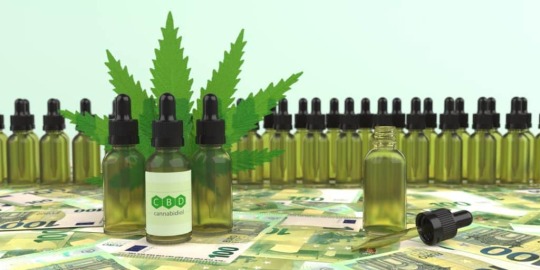
Finding the right cannabis oil at the right price point can seem like an impossible task. Luckily, there are a few ways you make sure you get the most for your dollar based on your desired results. It can take a few hours, days, or weeks of research to find the right cannabis oil. While price matters, some affordable cannabis oils can be just as effective as the most expensive cannabis oils. Here are a few ways to save money on cannabis oil. - Buy cannabis oil in bulk. Larger quantities mean more upfront costs, but the product often comes with considerable savings of up to 40 percent per milligram. Manufacturers pass their savings on packaging onto you. Buying in bulk can also earn you free shipping with most hemp-derived oil companies. - Follow your favorite cannabis oil companies or retailers on their social media channels to scope out special discounts, promotions, and giveaways. - Sign up for low-income, veteran, or other financial assistance programs if you qualify. Not every company offers this perk, but the ones that do may give you a discount of more than half off if you can send qualifying proof or apply for a spot in their program. - Buy based on price-per-milligram. In order to calculate the price per milligram of a cannabis oil bottle, divide the total price of the product by the milligrams of cannabinoids in the product. - When searching for bargains, always make sure you buy cannabis oil that has a certificate of analysis (COA) from an accredited third-party laboratory ensuring you have a safe and pure products.
Will CBD Prices Ever Come Down?
Industry insiders believe the price of cannabis oil will eventually go down, but not anytime soon. The industry’s strict regulations place an enormous burden on cannabis companies in terms of testing, taxes, and other rules on the plant’s production. A variety of factors serve to limit the amount of cannabis production possible. Whether it’s commercial cannabis bans in your town or excessive licensing costs, it takes a lot of money to start up a cannabis company. Cannabis oil may never be the most affordable natural medicine available, at least compared to pharmaceutical or herbal supplement products. However, prices are expected to go down as lawmakers become more supportive of the industry. Once they remove the harsh limits imposed on weed companies, maybe then will the prices become accessible for those who truly need it. As you can see, the price of cannabis oil varies widely based on the source, quality, potency, location, size, and other manufacturing and marketing costs associated with the product. The novelty of the industry and a lack of regulation have contributed to cannabis oil’s high prices, but consumers are hopeful that one-day cannabis oil can reach an accessible price point for everyone that needs it. Stay tuned to the Cannabis Training University blog for updates on: - price of cannabis oil - THC oil cost - how much does CBD oil cost - Colorado cannabis oil cost - THC oil price per gram - how to ingest cannabis oil - cost of CBD oil products - cheapest full-spectrum CBD oil
Learn to Grow High CBD Cannabis
There's never been a better time to learn to grow with legalization efforts ramping up worldwide! Enroll in Cannabis Training University to learn how to grow your own medicine so you can control your budget. Become the next great cannabis grower with online cannabis training from the #1 rated marijuana school.

Read the full article
9 notes
·
View notes
Link
Cannabis Rx 2023 01 27
Hemp Oil Emulsion Used for daily Asthma medicine to replace ICS therapy due to bone loss.
Ingredients: 2 to 3 gm +/- 72% THC-a decarboxylated.
Essential oils: 15 to 20 drops β-caryophyllene - this oil is a cannabinoid 5 to 10 drops Lavender Spike oil - this oil interferes with the breakdown of cannabinoids
¼ tsp liquid Lecithin MCT oil
Procedure: Pre freeze the THC-a to make it easier to handle.
To decarboxylate THC-a into Δ9-THC place the frozen THC-a into the bottom of a small 1 to 4 oz pyrex measuring cup add the liquid Lecithin and enough MCT oil to cover the THC-a or about 10 ml. Place in the oven at 200 Deg. F on a flat pan to keep the cup upright and stable. Bake for 1 hour and 10 minutes. Remove from oven and mix very well while still hot. Using a small funnel pout the mixture into a 30 ml essential oil dripper bottle. Add about 10 ml more MCT oil to the measuring cup and use it to wash and dilute the origins medicine in the measuring cup and add to dripper bottle. Add the essential oils to the medicine in the dripper bottle. Repeat the cleaning of the cup you decarboxylated in with a final +/- 10 ml of MCT oil to finish recovering your Δ9-THC and finish filling your dripper bottle cleaning the essential oils from the funnel being careful not to overfill your medicine bottle.
Reassemble and cap the bottle and shake very well.
Dose: 2 or 3 drops sublingually 2 to 4 times a day.
11 notes
·
View notes